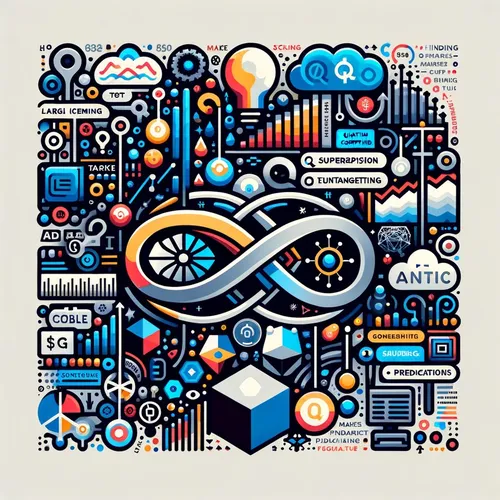Quantum Leap: Pharma Giants Harness Qubits to Accelerate Drug Discovery
- Author
- Inception Point Ai
- Published
- Mon 14 Jul 2025
- Episode Link
- https://www.spreaker.com/episode/quantum-leap-pharma-giants-harness-qubits-to-accelerate-drug-discovery--66975004
This is your Quantum Market Watch podcast.
Imagine stepping onto the data floor of a global pharmaceutical giant—not into a cleanroom with pill bottles and stainless steel benches, but a humming control center where new molecules are born not in test tubes, but inside the lattice of qubits. This is Leo, your Learning Enhanced Operator, and today on Quantum Market Watch, we're diving straight into a paradigm-shifting announcement. Just hours ago, several major media outlets confirmed a landmark: the pharmaceutical industry has rolled out a quantum computing use case poised to transform drug discovery and healthcare innovation.
Here's the scoop: Quantum computers, harnessing the mind-bending rules of entanglement and superposition, can simulate molecular interactions at a level of detail that's essentially unreachable for classical machines. Think of every possible configuration of electrons, bonds, and energies being explored at once—not one after the other, but in parallel, like billions of expert chemists working together in a single breath. This week, global pharma leaders began integrating quantum algorithms into their drug design process, especially targeting vaccines and enzyme inhibitors that require understanding vast, subtle interactions inside our cells. The trick? Quantum simulation of molecular structures and reactions, delivering answers in days instead of years—shaving not just time but astronomical costs from R&D. These advances promise faster identification of effective compounds and less reliance on slow, expensive laboratory trial and error.
If you want to grasp the sensation in the room, picture a quantum system mid-experiment: chilled to near absolute zero, superconducting circuits thrumming quietly under the watchful gaze of physicists and machine learning engineers. They prepare a quantum circuit to model a complex protein-ligand interaction. The qubits don't simply “store” ones and zeros. Instead, they dance—a flicker of possibility weaving between a thousand overlapping futures. In seconds, the quantum processor crunches through possibilities that would take a classical supercomputer millennia. The outcome? Concrete predictions on which drugs will bind effectively, which chemical scaffolds to pursue, and which blind alleys to avoid.
This is not theory. Today, pharma giants, in partnership with market leaders like IBM, Rigetti, and cloud-based platforms, began running production quantum workloads for drug target validation and molecular simulation. The impact? The pipeline from molecular hypothesis to clinical trial could be radically shortened. For patients, that means hope coming years sooner. For the industry, it's a revolution that also levels the playing field: mid-size firms and academic labs can access quantum horsepower via cloud services, democratizing discovery power once reserved for the wealthiest.
As I reflect on today's news, I see a parallel: just as entangled particles mirror each other instantly across any distance, the convergence of quantum computing and pharma research is triggering ripples across science, industry, and society. What happens in the cold, controlled chaos of a quantum lab could shape the warmth of a hospital ward years ahead.
Thank you for joining me on Quantum Market Watch. If you have questions or want a topic discussed on air, email me at [email protected]. Remember to subscribe, and for more, visit Quiet Please dot AI. This has been a Quiet Please Production. Until next time, keep your mind as open—and as entangled—as the future of quantum itself.
For more http://www.quietplease.ai
Get the best deals https://amzn.to/3ODvOta
This content was created in partnership and with the help of Artificial Intelligence AI
